
A climate task force in Bellingham, Washington, is advancing a long-range plan that would compel city homeowners to stop using natural gas for heating as part of an effort to erase the city’s carbon footprint.
A number of communities around the country have approved bans on gas service in new residential construction. But Bellingham, a city of about 90,000 people 85 miles north of Seattle, would apparently become the first in the country to force a wholesale conversion of homes, new and old, from natural gas to electric heat pump technology.
The plan was described in an article published by The New York Times earlier this month. The Bellingham City Council has yet to consider the proposal formally, much less adopt it, and the new rules wouldn’t take effect until 2035 at the earliest.
The task force looked at a number of potential moves, including a ban on natural gas in new construction, a required conversion to electric heat when a house changes hands, and a transition away from natural gas on all buildings by 2030. The current proposal would allow gas cooking appliances but would require both residential and commercial structures to be heated with heat pumps or their equivalent by 2040. That timetable could be pushed ahead by 5 years.
Michael Lilliquist, a member of the city council, told The Times that he would organize a series of public meetings to get feedback on the plan before it went to the council for review. Although the city has already adopted several measures to lower its carbon emissions, Lilliquist said it’s not clear whether this plan could win city council approval.
Not surprisingly, the proposal is not winning many friends in the fossil fuel industry. A petroleum group called Energy in Depth criticized the proposal for overlooking the role that natural gas has played in lowering carbon emissions over the last 15 years, and said there are cheaper and more effective ways of reducing carbon.
“Unfortunately for consumers, such a policy would have real consequences,” the group said in a prepared statement. “A natural gas ban in residences disregards key facts about natural gas usage in homes and would cause more harm than good for both the environment and the people of Bellingham.”
Fossil fuel bans picking up steam
Moves to prevent natural gas connections in new residential construction started in Berkeley, California, last summer and have since spread to two dozen cities, towns, and counties by the end of 2019, according to an S&P Global market report.
That’s being met with campaigns to promote the benefits of natural gas from such groups as the Partners for Energy Progress, which says it will spend $1 million to promote the use of gas.
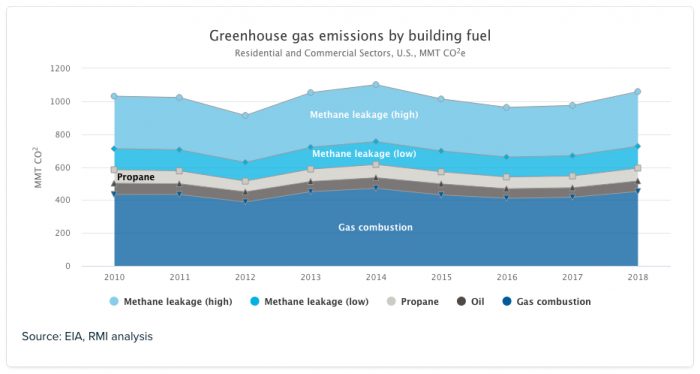
In an effort to better understand the impact of using fossil fuels for heating and cooking in U.S. homes, the Rocky Mountain Institute (RMI) earlier this month announced a database that provides a state-by-state look at emissions, fuel use, and other factors related to carbon intensity in buildings.
RMI, a Colorado-based environmental research and advocacy center, said most people don’t recognize the threat posed by heating and cooling appliances that use fossil fuels.
“This fact base offers a crash course in direct building emissions,” RMI said, “showing where they come from and how they fit into the overall emissions picture in the U.S…By characterizing the scope of the problem, we hope to spur the swift, ambitious action needed to combat it.”
In all, 10% of all carbon emissions in the U.S. are from burning fossil fuels, primarily natural gas, in homes and businesses. Ten states account for 56% of the direct building emissions, the RMI report says, with New York, California, and Illinois responsible for one-quarter of them.
Leaks in an aging distribution system also represent a serious carbon problem. In 2018, the report estimates that methane leaks amounted to 223 billion cubic feet, about 3% of the total amount of gas that was delivered. The average gas distribution main is more than 30 years old, with 25% of active mains more than 50 years old, the RMI report says. Capital spending on the gas distribution system reached $15 billion in 2017, with most of that going toward expanding the network rather than replacing aging gas lines. At the current rate of repair, it will take more than 230 years to replace every gas pipe in the system.
Cooks love their gas ranges
One howl of protest about potential gas bans has come from restaurateurs. An outright ban on the use of fossil fuel connections could force chefs to say farewell to their beloved commercial ranges, a prospect that didn’t sit well with the California Restaurant Association after Berkeley passed its landmark legislation in July.
In a lawsuit filed last November, the association said the ordinance overlooked state and federal regulations, and would unfavorably effect restaurants that serve flamed-seared meats, charred vegetables, or relied on an intense flame under their woks, according to a report from ABC News.
Although Berkeley’s ban, which went into effect on January 1, allows building owners to seek an exemption for the gas ban, the restaurant group worries that the campaign in Berkeley and elsewhere represents a real threat to a basic kitchen appliance.
Robert W. Phillips said in a statement released by the association that a ban on gas-fired appliances would adversely affect the preparation of high-quality food.
“It’s like taking paint away from a painter and asking them to create a masterpiece,” he said.
However, the Building Carbonization Coalition argues that clean energy objectives will be impossible to meet without getting fossil fuels out of the mix. “There’s no way to meet carbon or clear energy goals without electrifying the building sector,” coalition director Panama Bartholomy told The San Francisco Chronicle. “If you get to carbon neutrality, you can’t still be burning fossil fuels inside homes.”
—Scott Gibson is a contributing writer at Green Building Advisor and Fine Homebuilding magazine.
Weekly Newsletter
Get building science and energy efficiency advice, plus special offers, in your inbox.





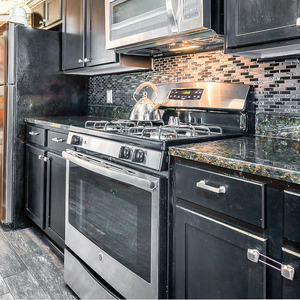
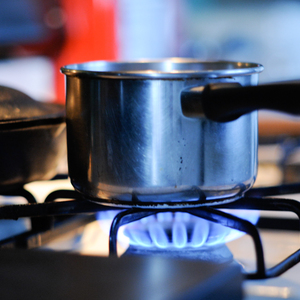
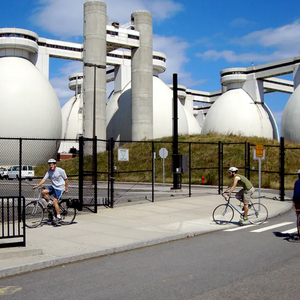
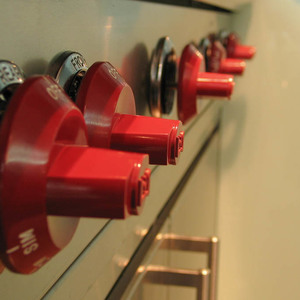






14 Comments
Cooks may love their gas ranges...but I have talked to chefs that have switched to induction...and they love it! I am, by no means a chef...but i have cooked food equally well on both gas and induction. Personally I have found it to be quite similar to gas. The ceramic top doesn't appear to influence how quickly or slowly the "burner" heats up cookware and the way the cooktop is designed appears to give the same/similar output as gas. My understanding is that induction will provide about 90% of the energy used to the cookware....compared to a measly 40%-50% for gas.
Most chefs are creative people. I am sure if the game changed, they would adapt and define a new norm.
Induction is great for liquids and keeping things warms which is probably what most restaurants use them for.
It's also great for all kinds of cooking, not just "liquids and keeping things warm". I've had an induction stove for almost a year, and there's pretty much no downside. Maybe the only downside I can think of is having to use pans that are roughly similar in size and shape to the burner. So for example I can't use a rectangular griddle on my stove (but some of the Bosch stoves do have a rectangular element), and if I want to use an unusually huge or unusually tiny pan it might not work well. But everything from my 2-quart pot up to my 12-inch cast iron skillet works great.
An exception allowing gas for cooking seems like a waste, at least for residential. That means the gas infrastructure is still there, and still leaking. I could understand maybe allowing gas for commercial kitchens. They probably have gas grills that are not easily replaced by electric.
Two quick questions. No 1: Have you noticed any cold spots on the pan when searing? Specifically in the middle and edges. I've read that induction doesn't really do well at moving heat into other areas of the vessel which aren't being subjected to the magnetic field. Perhaps this is what you meant by having to use a pan which is no larger than the coil.
No2: Have induction ranges been updated to allow one to lift the pan off the coil without it automatically shutting off?
1. The heat is concentrated over the coil. It's pretty even but not perfect, for example the large burner on my stove causes a slightly cooler spot in the middle. On the smaller burners I haven't noticed a cool spot in the middle.
The largest burner is advertised as 11 inches. My favorite pan is a 12 inch cast iron skillet which is 11 inches diameter on the bottom. But if I shine a light through the glass I can see that the actual coil is only 10.5 inches diameter, and as a result the edges of the skillet are a little cool. If I use my 10 inch cast iron skillet on the same burner it heats across the whole pan, but heat still doesn't travel up the sides much. It hasn't been a problem.
Cast iron isn't the best for spreading out heat. Something like an All Clad pan with an aluminum core would work better. I've noticed no issues using my 12 inch all clad skillet which is I believe 10 inches diameter on the bottom.
Overall, uniformity is similar to most gas stoves I've used. Not perfect, but not a problem for typical cooking. I'm sure there are stoves out there with perfectly even heating, but I haven't used one.
Another issue with pan size is, if the pan is too small for the burner, the stove might either shut off the outer part of the burner (effectively making it a smaller burner with unknown diameter), or it might refuse to work. And if a pan is too big there might also be issues (but I'm not sure why). I haven't had any issues with pan size, but all my plans are fairly normal size, and I haven't really experimented with it. I think my burners are 6, 6, 8, and 11 inches diameter, and as long as I pick one that's sort of close to the right size it works. My 10 inch cast iron (8 inch bottom) is fine on the 8 or 11 inch burner. My 3 quart pot (around 7 inch diameter) is fine on the 8 or 6 inch burner. The 6 inch one would only heat the middle of that pot, but that's fine for simmering things or boiling water. I think my smallest pot (2 quart, about 6 inch diameter) even works on the 8 inch burner.
2. If I lift the pan for a few seconds there's no noticeable interruption. If I lift it for around 10 seconds the burner indicator starts flashing, but it turns back a few seconds after I put the pan back. If I remove it for a minute or two it beeps and shuts off.
I have an LG lse4616st. Bosch also makes some great options, but they were a little more expensive.
Induction is interesting in that the “burner” itself produces essentially no heat, unlike every other cooktop where the burner IS the heat source. With induction cooktops, the alternating magnetic field causes eddy currents within the material of the pot itself, and the heat is actually generated IN the material the pot is made of. Incidentally, this is somewhat similar to how the older mechanical electric meters work. It’s a neat technology, and I plan to replace my own cooktop with an induction cooktop in the next few years. We bought all induction ready pots when we moved here a few years ago so we’re ready.
I do wish the induction cooktops were more reliable. There are a lot of reported issues with induction cooktops dying early. This is NOT a problem with the technology itself, but rather with some poor implementations that are out there. That should improve.
I very much doubt the “leakage” numbers cited for natural gas distribution systems. I’ve worked in some of the compressor stations, and they do NOT leak like the article implies. If they did, they would be a very big safety risk and would explode often. Note that the big interstate gas transmission pipelines carry gas that hasn’t had the stink added yet, so they use sensors to detect any leaks for safety purposes. They warn you about things, and they make you watch safety videos about the alarms (among other things), but it’s VERY rare to have any significant leakage in these plants.
The same goes for pipelines. Many of the older pipelines are fine. 50+ year life is expected. I think people think about things they’re used to in their houses that have much shorter lifespans, so they think utilities running decades old facilities are pushing the limits but that’s not the case. Did you know that many of the utility duct systems (underground conduits) in major cities are over a century old? One example: Verizon owns the old western union system, and they run fiber optic cables in some of the old conduit that is made from hollowed out wood logs. Works fine. The usual telecom batteries I spec are rated for 15-25 years, and there is actually a type of telecom battery (a belcell) that is rated for a 100 year life. Utilities have to operate on long time spans to keep costs manageable. Just because people outside of the industry aren’t used to designing systems to last that long doesn’t mean it can’t be done.
There IS a lot of pipeline replacement going on too. Older steel lines are often replaced with HDPE lines. This is often done simultaneously with system upgrades and expansion projects. The simple reality is that many of the older pipelines test just fine, they don’t have any issues, and there is no current need to replace them. Yes, there are pipelines from the 40s (big inch and little inch) that are still online, and they’re still in good shape.
I’m not so sure the push to electric away from natural gas is really accomplishing the goal of reducing emissions or energy use either. Much of the new electric generation that has come online in the last 20 years or so is natural gas fired. Using electric heat supplied by natural gas generation is less efficient than burning the natural gas directly in a furnace. Heat pumps are an exception here.
One last thing: natural gas really isn’t a fossil fuel. It occurs naturally from decomposition, it does not require a fossilization process to occur the way crude oil does. Some natural gas fields are actually known to replenish themselves over time.
Bill
> "I very much doubt the “leakage” numbers cited for natural gas distribution systems."
I don't dispute your experience regarding leaks at distribution. But almost more often than not, when I walk by a gas meter I smell gas. My own gas meter smelled, and I pretty much ignored it because I thought it was normal. One day it started bugging me, so I poured soapy water on everything and found bubbles rapidly forming at a valve upstream of the meter. The utility company quickly came out when I called them, and they described it as a "huge" leak that was easily fixed by tightening a set screw in the valve.
MethaneSAT is a new satellite being built to look for methane emissions. Hopefully it will give us better information about where significant leaks are. https://www.methanesat.org/
> "Using electric heat supplied by natural gas generation is less efficient than burning the natural gas directly in a furnace. Heat pumps are an exception here."
I've read that induction is 90% efficient in transferring heat to the pan, whereas gas is 30-40% efficient. The post above says 40-50% efficient for gas. So induction might have a similar efficiency advantage as heat pumps. I don't know how accurate the heat transfer efficiency numbers are, but it seems reasonable. With a gas burner on medium to high, you could get burned holding your hand next to the pan from heat rising around the pan. With induction there's no heat except what's in the pan itself.
But either way, energy used for cooking is probably small relative to heating and hot water.
https://www.greenbuildingadvisor.com/article/natural-gas-pipelines-are-leaking
I suspect the local EMF intensity of an induction WOK burner would shake the fillings right out of your teeth! :-)
While there are good induction solutions for perhaps most residential cooking, there is still a way to go for some commercial applications.
Induction woks up to around 5kW are available. That would be good for one to several portions at a time.
https://professional.electrolux.com/gb/pd/cooking/900xp/induction-cook-tops/induction-wok/modular-cooking-range-line-900xp-electric-induction-wok-400-mm-391353/
A wok to cook in bulk, a few feet in diameter, would certainly require a lot of power. Maybe they can just put the pan over an MRI machine turned on its side.
>" Maybe they can just put the pan over an MRI machine turned on its side."
:-)
Sounds about right.
I was picturing a wok getting sucked through the MRI and spat out the back like a cannon.
I took a look at the wok burner. 5kw is not bad. 5kw is about equal to 17,000 btuh, and that's on the big side for semi-commercial ranges. And, if we're doubling efficiency, that means that twice as much heat is actually going into the pot/food, so that 5kW probably gets that wok smokin'. Maybe the MRI isn't needed after all.
ROFL..Thanks for the funny visual running through my head.
Log in or create an account to post a comment.
Sign up Log in